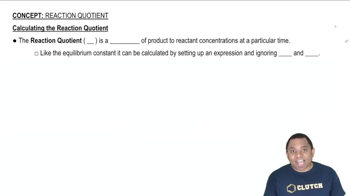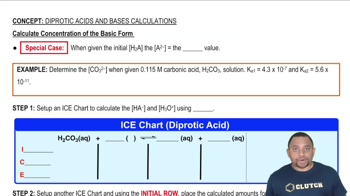Textbook Question
Write an expression for the equilibrium constant of each chemical equation.
a. SbCl5(g) ⇌ SbCl3(g) + Cl2(g)
b.2 BrNO(g) ⇌ 2 NO(g) + Br2(g)
c. CH4(g) + 2 H2S(g) ⇌ CS2(g) + 4 H2(g)
d. 2 CO(g) + O2(g) ⇌ 2 CO2(g)
3
views
 Verified step by step guidance
Verified step by step guidance

